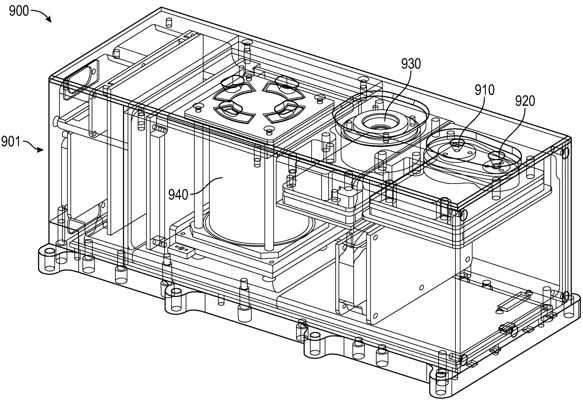| US 11,688,599 B1 | ||
| Sensing data related to charged particles to predict an anomaly in an environment | ||
| Chadwick Lindstrom, Albuquerque, NM (US); John Ballenthin, Albuquerque, NM (US); David Barton, Los Ranchos, NM (US); Joseph Coombs, Albuquerque, NM (US); Scott Kratochvil, Albuquerque, NM (US); David Stiles, Albuquerque, NM (US); Adrian Wheelock, Albuquerque, NM (US); Stephen Quigley, Albuquerque, NM (US); Patrick Roddy, Albuquerque, NM (US); and Richard Selesnick, Albuquerque, NM (US) | ||
| Assigned to Government of the United States of America as represented by the Secretary of the Air Force, Kirtland AFB, NM (US) | ||
| Filed by Government of the United States, as represented by the Secretary of the Air Force, Kirtland AFB, NM (US) | ||
| Filed on Dec. 18, 2018, as Appl. No. 16/223,471. | ||
| Claims priority of provisional application 62/694,686, filed on Jul. 6, 2018. | ||
| Int. Cl. H01J 49/48 (2006.01); H01J 37/244 (2006.01); H01J 37/26 (2006.01); H01J 37/05 (2006.01) | ||
| CPC H01J 49/48 (2013.01) [H01J 37/05 (2013.01); H01J 37/244 (2013.01); H01J 37/261 (2013.01)] | 20 Claims |

|
1. An environmental sensor for acquiring data related to flux and energy of charged particles in a space environment for using the data to determine, in substantially real time, whetherthe space environment is conducive to an anomaly caused by the charged particles, the sensor comprising:
a spiral electrostatic analyzer structurally configured for charged particle detection in the space environment and including a cylindrical section having an axis, the spiral electrostatic analyzer generating a controllable radial electric field with respect to the axis to provide energy filtering of incoming charged particles, where, after filtering, the charged particles impact a charge multiplier to establish a detectable signal, wherein the cylindrical section comprises two conductive cylinders coaxially aligned, with a first cylinder placed at least partially inside a second cylinder, each cylinder comprising an electrical terminal to apply a bias voltage thereto; and a plurality of silicon detector telescopes structurally configured to collectively detect electrons having energy within the range of 100 electronvolts (eV) to 5 mega-electronvolts (MeV) and to collectively detect protons having energy within the range of 2 MeV to 100 MeV. |